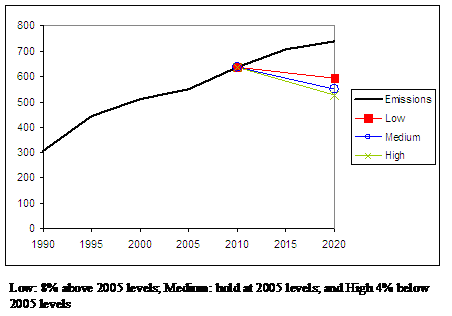For over a year now, South Korea has been undertaking an extensive dialogue to establish a target to cut their global warming pollution (see my discussion here and this ClimateWire story –sub req.– from last year). And now the South Korean government has outlined the possible targets that they will commit to later this year (as reported by Reuters.)
The South Korean government has just announced that later this year they’ll commit to one of three absolute target levels for their emissions in 2020:
- 8% increase from 2005 levels;
- Hold at 2005 levels; and
- 4% below 2005 levels.
South Korea’s emissions experienced significant growth during the 90’s — doubling between 1990 and 2005 — as they developed their economy, industrialized, and pulled large numbers of their population out of poverty (remember they were one of the “Asian Tigers”). Their emissions growth has slowed during this decade, but it has still increased since 2000.
So the three proposed targets would still amount to a significant increase from where they were in 1990, but each target would represent a serious cut from where they would be if the government took no action (see figure*) — representing cuts of 20-28% below their projected levels without action. Given the past and projected trajectory of emissions, this is a significant reversal.

And they somewhat reflect South Korea’s share of responsibility to address global warming.
In the discussions about how much action each country should undertake there are different measures of “equity” ( as outlined in this report ) that form the basis of much of the negotiation (often indirectly influencing country’s positions). The target options proposed by South Korea are within the range of efforts that South Korea would be expected to undertake in these measures of equity (see figure**) — although just outside the effort they would be expected under some important measures of equity.



